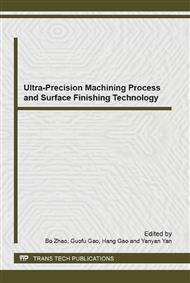p.101
p.107
p.111
p.115
p.119
p.123
p.127
p.131
p.136
Influence of Grinding Parameters on Residual Stress of Nano-ZrO2 Ceramics
Abstract:
Residual stress of ceramics ground surface was detected by the X-ray instrument, and it was analyzed in present paper. The experimental results show that the content of metastable tetragonal phase of ZrO2 and grinding stress are the primary factors which induce martensitic transformation on ZrO2 ceramics ground surface; during grinding the deeper the grinding depth is, and the bigger abrasive grain size is, the grinding stress in material matrix is larger. After analyzing the influence of grinding parameters on residual stress, it can be found that martensitic transformation can prompt the compressive residual stress to some extent, so as to improve the quality of ground surface.
Info:
Periodical:
Pages:
119-122
Citation:
Online since:
October 2014
Authors:
Price:
Сopyright:
© 2014 Trans Tech Publications Ltd. All Rights Reserved
Share:
Citation:


